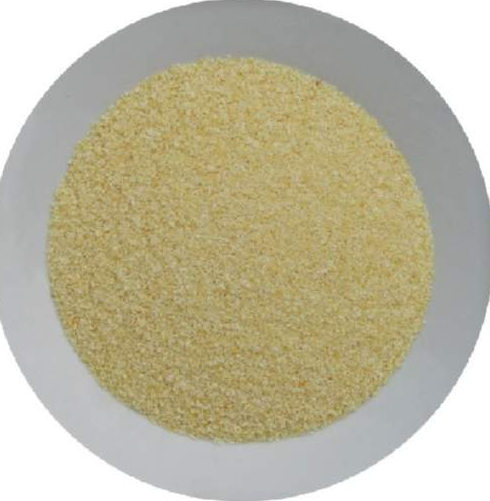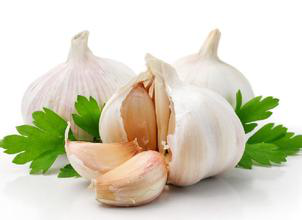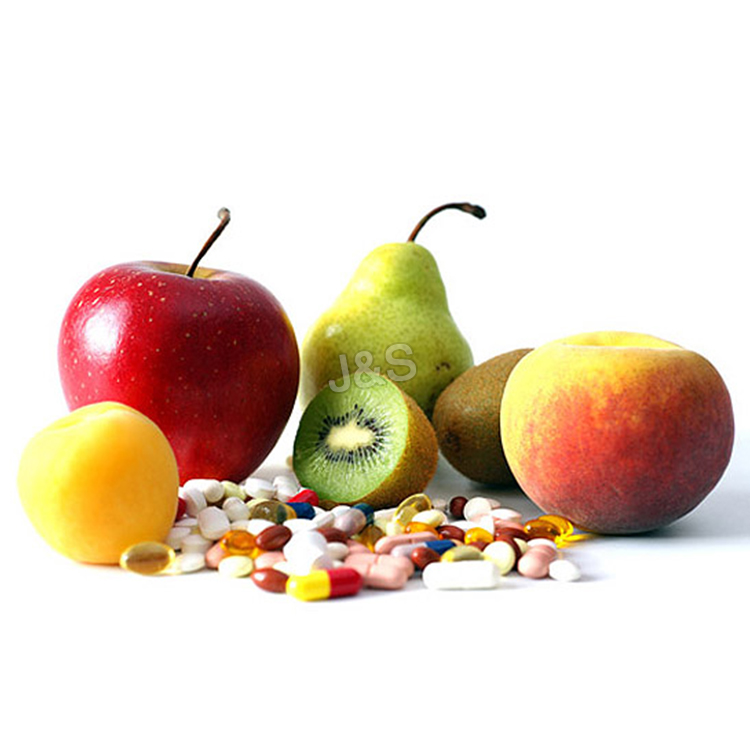Wholesale 100% Original Garlic Powder Supply to Sacramento
Wholesale 100% Original Garlic Powder Supply to Sacramento Detail:
[Latin Name] Allium sativum L.
[Plant Source] from China
[Appearance] Off-white to light yellow Powder
Plant Part Used:Fruit
[Particle size] 80 Mesh
[Loss on drying] ≤5.0%
[Heavy Metal] ≤10PPM
[Storage] Store in cool & dry area, keep away from the direct light and heat.
[Shelf life] 24 Months
[Package] Packed in paper-drums and two plastic-bags inside.
[Net weight] 25kgs/drum
Main function:
1.Wide-spectrum antibiotic, bacteriostasis and sterilization.
2.Clearing away heat and toxic material, activating blood and dissolving stasis.
3.Lowering blood pressure and blood-fat
4.Protecting brain cell.Resisting tumor
5.Enhancing human immunity and delaying aging.
Applications:
1. Applied in pharmaceutical field, it is mainly used in treating eumycete and bacterial infection, gastroenteritis and Cardiovascular Disease.
2. Applied in health product field, it is usually made into capsule to lower blood pressure and blood-fat and delay senility.
3. Applied in food field, it is mainly used for natural flavour enhancer and widely used in biscuit, bread, meat products and etc.
4. Applied in feed additive field, it is mainly used in feed additive for developing the poultry, livestock and fishes against the disease and promoting growning and improving the flavor of egg and meat.
5. Applied in veterinary field, it is mainly used to inhibit the reproduction of colon bacillus, salmonella and etc. It also can treat respiratory infection and disease of digestive tract of poultry and livestock.
Product detail pictures:

Related Product Guide:
With advanced technologies and facilities, strict high quality regulate, reasonable price tag, excellent support and close co-operation with shoppers, we have been devoted to furnishing the best benefit for our buyers for Wholesale 100% Original Garlic Powder Supply to Sacramento , The product will supply to all over the world, such as: Ottawa, Angola, Lesotho, Based on products and solutions with high quality, competitive price, and our full range service, we have accumulated experienced strength and experience, and we've built up a very good reputation in the field. Along with the continuous development, we commit ourselves not only to the Chinese domestic business but also the international market. May you moved by our high quality items and passionate service. Let's open a new chapter of mutual benefit and double win.
Tea is an aromatic beverage commonly prepared by pouring hot or boiling water over cured leaves of the tea plant, Camellia sinensis.[3] After water, tea is the most widely consumed beverage in the world.[4] It has a cooling, slightly bitter, and astringent flavour that many people enjoy.[5]
Tea likely originated in China during the Shang Dynasty as a medicinal drink.[6] Tea was first introduced to Portuguese priests and merchants in China during the 16th century.[7] Drinking tea became popular in Britain during the 17th century. The British introduced tea to India, in order to compete with the Chinese monopoly on tea.[8]
Tea has historically been promoted for having a variety of positive health benefits, and recent human studies suggest that green tea may help reduce the risk of cardiovascular disease and some forms of cancer, promote oral health, reduce blood pressure, help with weight control, improve antibacterial and antivirasic activity, provide protection from solar ultraviolet light,[9] increase bone mineral density, and have “anti-fibrotic properties, and neuroprotective power.”[10] Additional research is needed to “fully understand its contributions to human health, and advise its regular consumption in Western diets.”[11]
Consumption of tea (especially green) is potentially beneficial to health and longevity given its antioxidant, flavanols, flavonoids, polyphenols, and catechins content.[12][13] Tea catechins have known anti-inflammatory and neuroprotective activities, help to regulate food intake, and have an affinity for cannabinoid receptors, which may suppress pain, nausea, and provide calming effects.[14]
Consumption of green tea is associated with a lower risk of diseases that cause functional disability, such as “stroke, cognitive impairment, and osteoporosis” in the elderly.[15][16]
Tea contains L-theanine, and its consumption is strongly associated with a calm but alert and focused, relatively productive (alpha wave dominant), mental state in humans. This mental state is also common to meditative practice.[17]
The phrase “herbal tea” usually refers to infusions of fruit or herbs made without the tea plant, such as rosehip tea, chamomile tea, or rooibos tea. Alternative phrases for this are tisane or herbal infusion, both bearing an implied contrast with “tea” as it is construed here. Coffee is a brewed beverage with a distinct aroma and flavor, prepared from the roasted seeds of the Coffea plant. The seeds are found in coffee “cherries”, which grow on trees cultivated in over 70 countries, primarily in equatorial Latin America, Southeast Asia, India and Africa. Green (unroasted) coffee is one of the most traded agricultural commodities in the world.[1] Coffee is slightly acidic (pH 5.0–5.1[2]) and can have a stimulating effect on humans because of its caffeine content. It is one of the most consumed drinks in the world.[3]
Wild coffee’s energizing effect was likely first discovered in the northeast region of Ethiopia. Coffee cultivation first took place in southern Arabia;[4] the earliest credible evidence of coffee-drinking appears in the middle of the 15th century in the Sufi shrines of Yemen.[4]
In East Africa and Yemen, coffee was used in native religious ceremonies that were in competition with the Christian Church. As a result, the Ethiopian Church banned its secular consumption until the reign of Emperor Menelik II of Ethiopia.[5] The beverage was also banned in Ottoman Turkey during the 17th century for political reasons[6] and was associated with rebellious political activities in Europe.
Coffee berries, which contain the coffee seeds, are produced by several species of small evergreen bush of the genus Coffea. The two most commonly grown are also the most highly regarded Coffea arabica, and the “robusta” form of the hardier Coffea canephora. The latter is resistant to the devastating coffee leaf rust (Hemileia vastatrix). Once ripe, coffee berries are picked, processed, and dried. The seeds are then roasted to varying degrees, depending on the desired flavor, before being ground and brewed to create coffee. Coffee can be prepared and presented in a variety of ways.
An important export commodity, coffee was the top agricultural export for twelve countries in 2004,[7] and it was the world’s seventh-largest legal agricultural export by value in 2005.[8] Some controversy is associated with coffee cultivation and its impact on the environment. Consequently, organic coffee is an expanding market.
Many studies have examined the health effects of coffee, and whether the overall effects of coffee consumption are positive or negative has been widely disputed.[9] The majority of recent research suggests that moderate coffee consumption is benign or mildly beneficial in healthy adults. However, coffee can worsen the symptoms of some conditions, largely due to the caffeine and diterpenes it contains.
Ambrette (Abelmoschus moschatus) or oil from the seeds of the plant are used for medicinal purposes as well as in food and cosmetics. Musk ambrette is a synthetic compound commonly used in food and cosmetics. This monograph is limited to information on ambrette (Abelmoschus moschatus)
Ambrette Seed Abelmoschus moschatus is also known as Musk Ambrette, and is derived from the seeds of the musk mallow plant. It is a relative of hibiscus sometimes known as Hibiscus abelmoschus and is indigenous to India.The genus Abelmoschus has six species distributed in the South and South East Asia and in North Australia.
This plant is cultivated for its seeds, which have a characteristic musk-like odor. The seeds are the source of ambrette, an aromatic oil used in perfumery. The plant grows to about 3 feet with showy yellow flowers with crimson centers. The plant is indigenous to India and is cultivated throughout the tropics.
Ambrette seed oil has been used in Chinese medicine for treatment of headaches, and the seeds have been used in Egypt for breath fresheners. The oil is used in high-grade perfumery. The main constituent is a sesquiterpene alcohol, fornesol. The seeds are valued medicinally for their diuretic, demulcent and stomachic properties.
The flowers are used for making zarda, an indigenous flavoured tobacco. The yellow portion of the petals found in plants growing in Muvattupuzha (Kerala) have flavonoids, myricetin and cannabiscitrin. The seeds are used as sachet powders as an insect-repellent.
In India, roots, leaves (rarely), and seeds of ambrette are considered valuable traditional medicines. The bitter, sweet, acrid, aromatic seeds are used as a tonic and are considered “cooling, aphrodisiac, opthalmic, cardiotonic, digestive, stomachic, constipating, carminative, pectoral, diuretic, stimulant, antispasmodic, deodorant, and effective against “kapha” and “vata,” intestinal complaints, stomatitis; and diseases of the heart, allays thirst and checks vomiting.
Ambrette is cultivated as pre-kharif crop in India.The musk mallow is widely cultivated in tropical climates for its many uses.The oil for perfumery is extracted by steam distillation of crushed seeds.
In India, roots, leaves (rarely), and seeds of ambrette are considered valuable traditional medicines. The bitter, sweet, acrid, aromatic seeds are used as a tonic and are considered “cooling, aphrodisiac, opthalmic, cardiotonic, digestive, stomachic, constipating, carminative, pectoral, diuretic, stimulant, antispasmodic, deodorant, and effective against “kapha” and “vata,” intestinal complaints, stomatitis; and diseases of the heart, allays thirst and checks vomiting. According to Unani system of medicine seeds allay thirst, cure stomatitis, dyspepsia, urinary discharge, gonorrhea, leucoderma and itch. Roots and leaves are cures for gonorrhea.
Cultivation
Ambrette is cultivated as pre-kharif crop in India. It is usually sown in March–April but as late as the first week of July in Central India (Oudhia 2001a). Seed rates of 41g/kg are optimum. Application of dried Neem leaves (500Kg/ha) at last ploughing increased oil content and quality. April sown crop start flowering in September; fruits ripen from November to January and are harvested when fully mature. Applications of fertilizers improves growth of plant and seed yields but studies conducted by SOPAM indicate the use of chemical inputs resulted in negative impact on oil content and quality. Harvested capsules are sun dried and seeds dehisce when the capsules burst. The oil for perfumery is extracted by steam distillation of crushed seeds.
Musk Mallow is a soft, herbaceous trailing plant to 2 m in length, with soft hairy stems. It has an underground tuber and dies back to this tuber in the dry season, emerging again with the first substantial rains of the wet season. Leaves are extremely variable in shape and size, in outline mostly circular to transversally elliptic, at base usually heart-shaped, angular, or 3-7-palmately lobed. Upper leaves are usually narrower and often arrow-shaped, coarsely toothed, rarely entire, at base 5-9-nerved. Flowers occur singly in leaf axils. Sepal cup is velvety outside. Petals are obovate, rounded at the tip, fleshy at the base and fringed by simple hairs. Stamen column is mostly yellow, at base dark purple, hairless. It is a relative of the edible okra and tubers and foliage formed a source of food for aborigines.
Medicinal uses: Musk Mallow is used as an antidote for snakebites. An emulsion from the seeds is considered to be anti-spasmodic and is used externally. Extensively used as an insecticide and a aphrodisiac. The oil of the seeds, with a strong musk odor, are also used in the perfume industry (now largely replaced by synthetic musk oils) and is used to flavor coffee.
Web: https://www.natureherbs.org | www.natureherbs.co
Email : natureherbs@ymail.com
Watsapp: +91 841 888 5555
Skype: nature.herbs
The after-sale warranty service is timely and thoughtful, encounter problems can be resolved very quickly, we feel reliable and secure.






